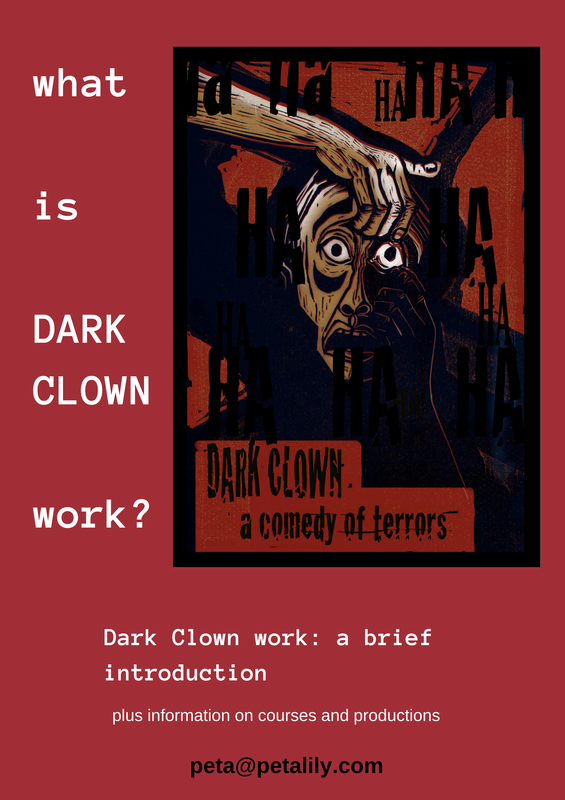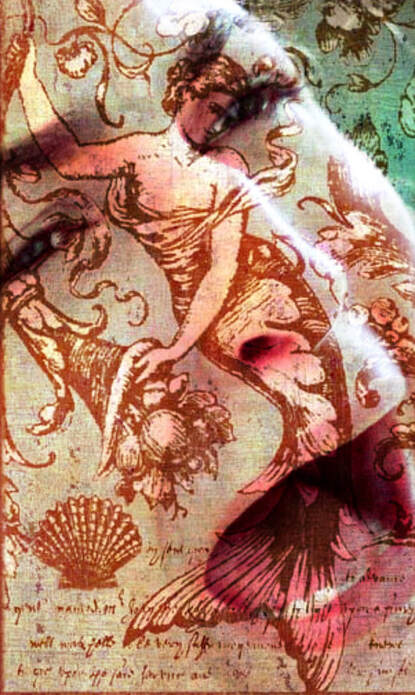
Like Fox and Maiden, it has a Fairytale inspiration. As a child, I was fascinated by the story of The Little Mermaid.
Here’s an edited excerpt from the Wikipedia synopsis of Hans Christian Andersen’s tale: ‘The Little Mermaid, longing for the prince and an eternal soul, visits the Sea Witch who lives in a dangerous part of the ocean. The witch willingly helps her by selling her a potion that gives her legs in exchange for her tongue and beautiful voice, as the Little Mermaid has the most enchanting voice in the world. The witch warns the Little Mermaid that once she becomes a human, she will never be able to return to the sea. Consuming the potion will make her feel as if a sword is being passed through her body, yet when she recovers, she will have two human legs and will be able to dance like no human has ever danced before. However, she will constantly feel as if she is walking on sharp knives.
(The Mermaid will obtain a soul only if she wins the love of the prince and marries him, for then a part of his soul will flow into her. Otherwise, at dawn on the first day after he marries someone else, the Little Mermaid will die with a broken heart and dissolve into sea foam upon the waves.)
She agrees, swims to the surface and drinks the potion. The liquid feels like a sword piercing through her body and she passes out. She is found by the prince, who is mesmerized by her beauty and grace, even though she is mute. Most of all, he likes to see her dance, and she dances for him despite suffering excruciating pain with every step.’
The Little Mermaid Scenario is a game for two players. It is based on the particular pain of not having one’s suffering understood … can you relate? Or is it only me? The scenario features the Prince gazing lovingly at the newly-legged Mer-girl and paying her compliments. She is mute, but inside she is in agony. Two kinds of pain – physical pain and the psychological agony of not being seen. The Mermaid player will use their voice and body to communicate their agony while the Prince player is unmoved by it. Imagine you are watching a film where we see the ‘subtext’ or ‘inside a character’s head’, invisible to the outside world and other characters.
I aim to teach the Dark Clown work with maximum care and clarity and course participants learn to travel from the light (Red Nose Clown) to the Dark in a step-by-step process. For all the tragedies of the pandemic, the plus-side of teaching online is that it prompted a finessed breaking down of the craft involved in preparing for the Scenarios. I set specific tasks and people try them in break-out rooms, building a muscle memory for the skills involved.
First, the Prince player needs to work on delivering lines such as ‘You are so beautiful. Your face, your hair. And yet you are silent. Oh how I’d love to hear your voice. I can imagine it trilling and cascading, the way your hair cascades and coils. Ah, How sweet it would be to hear you sing.’ - all this must in a poetic, longing, legato way. As with the The Beloved scenario (I’ve not written about The Beloved scenario on the blog yet) - there must be no complaint, no sarcasm, no reproach, no cynicism, no blame, no emotional blackmail. The Prince is a support role – it is the Mermaid where the Dark Clown work proper happens.
To advance the game, The Prince can move on to: 'How it would please me if you would dance with me. Come, let's waltz! A fast and beautiful Waltz.'
Here is the preparatory step for the Mermaid player. The conceit of the exercise is that the Prince will not see or react to anything you are saying while you job is to express the agony you are feeling. ‘It hurts!!!! It burns. Knives driving through my feet!!! Oh God oh God. Even just standing here hurts. I. AM. IN. AGONY.’ Then, to raise the game: ‘Can’t you SEE? I can't speak but inside I am screaming. SCREAMING. Agony. Agony.’ Of course using all the Dark Play strategies of contrast, variety of timbre, managing the audience’s physiology (‘laughing gear’) etc … 'No don't make me dance! Please - aiiiiiighhhhh! But you can't hear me can you? Searing hot knives! '
The two players are then set to improvise / play the scene.
People on the course found it (pardon the pun) painfully funny (Troubled Laughter).
*Side note: This is my favourite fairy tale. Which somehow mystifies me. Was I inspired by her resolve? I felt very ineffectual and cowardly as a child (I feel fairly much the same now, actually). Was I inspired by her ability to withstand pain? To transcend pain to achieve her goals (walk like a human)? Or was there something I deeply related to regarding her muteness - that her colossal suffering would go unseen? As a very anxious child, it seemed that I was often out of step with the normal world, witnessing how others all seemed to be coping unperturbedly, while I felt myself invisibly trapped in some ghastly alternate realm.
If you'd like to support the blog - or to help make possible the writing of the Dark Clown book - go here.
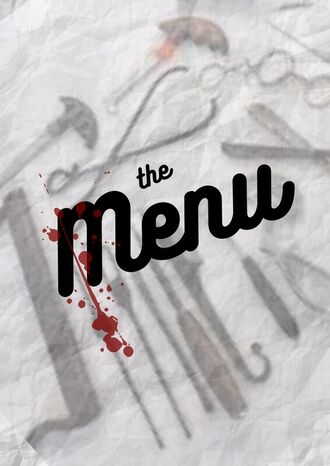
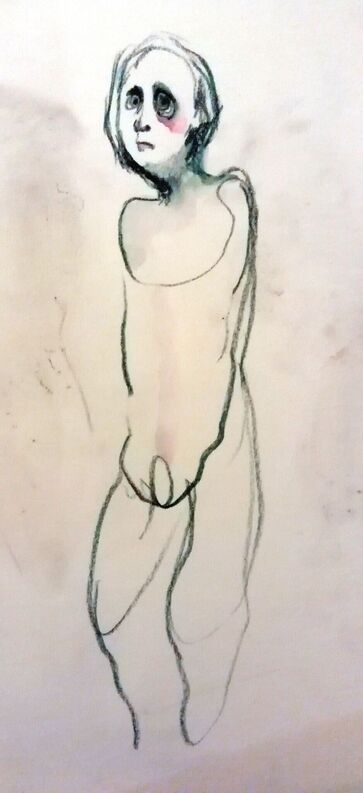
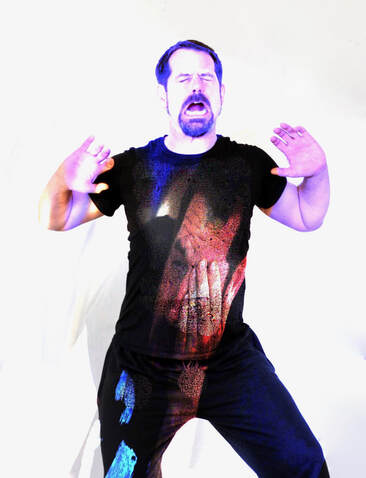
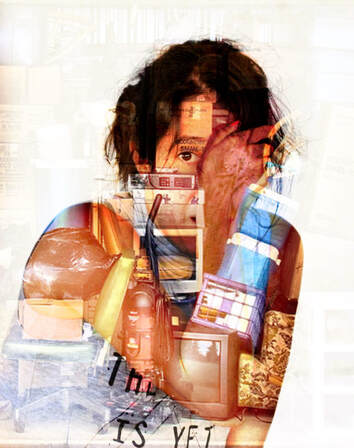
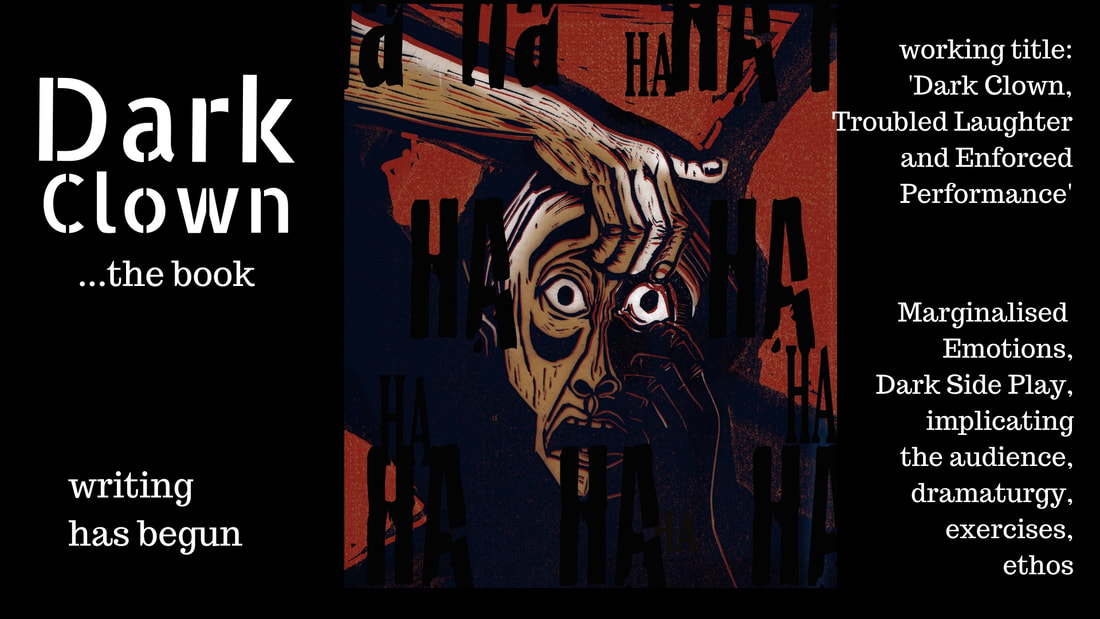
 RSS Feed
RSS Feed
